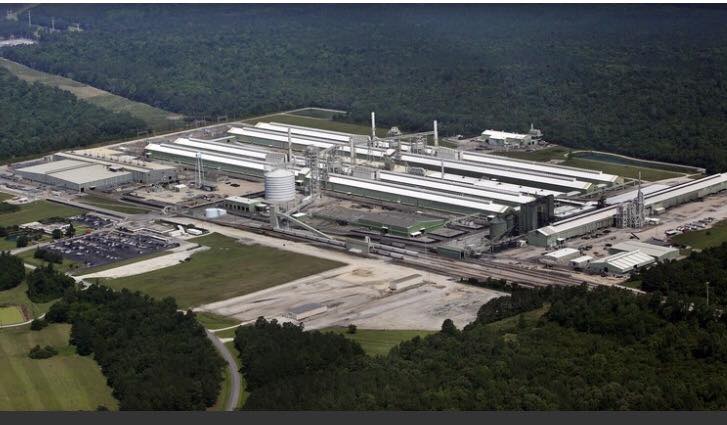
BERKELEY COUNTY, S.C. – Century Aluminum company leaders joined Gov. Henry McMaster and economist Dr. Joseph Von Nessen of the Darla Moore School of Business at the University of South Carolina on Tuesday to unveil the results of a study conducted by USC that examined the economic impact of Century’s Mt. Holly facility on the local and state economy.
In particular, the study documents the economic impact that Mt. Holly has on South Carolina, where the average wage among all direct jobs supported by Century Mt. Holly is $102,302.
“We are proud of the significant role that Mt. Holly plays in the Lowcountry economy. This new study finds that the annual economic impact of Mt. Holly is over $770 million, which is a significant contribution to the state of South Carolina,” remarked Century CEO Jesse Gary. “Because of our outstanding workforce, strong federal support of this critical industry and the critical leadership of Governor McMaster, Century has continued investing in South Carolina, and is poised to grow.”
SEE ALSO:
- New Agreement Saves 300 Century Aluminum Jobs, Keeps Facility Operating At 50 Percent
- Century Aluminum Workers Protest Outside Santee Cooper
- Santee Cooper Announces New Deal with Century Aluminum
- Goose Creek Voters Overwhelmingly Say ‘Yes’ To City Creating Own Power Company
“We pride ourselves on creating an economic climate that allows businesses to provide the best economic opportunities to our citizens. Mt. Holly has been instrumental in creating hundreds of good-paying family-sustaining jobs,” said South Carolina Gov. Henry McMaster. “Century Aluminum’s Mt. Holly plant is clearly a unique economic driver for South Carolina.”
According to the report, currently Mt. Holly:
- Contributes $772.9 million annually to the state’s economy.
- Creates and sustains 1,439 jobs for a total annual labor income of $112.9 million.
- For every 10 jobs created in Mt. Holly, another 22 are created elsewhere in South Carolina (for a total of 32 jobs).
On average, all jobs supported by Mt. Holly (directly or indirectly) pay $78,457 per year, which is 46% higher than the average wage in South Carolina. Moreover, the average wage of the Mt. Holly facility’s direct employees is almost 90% higher than the state’s average wage.
Despite the already sizable economic impact that Mt. Holly maintains on both the Charleston tri-county region and the state of South Carolina, Century is actively reviewing the opportunity to increase its production an additional 25% to reach full production levels. The Economic Impact study reveals that if Century were to reach its full capacity, the total direct economic impact of the smelter would increase from $772.9 million to approximately $877.0 million annually.
“Century Mt. Holly is generating a higher return on employment for the state than many other businesses of comparable size. For every 10 jobs that are created by Mt. Holly, another 22 jobs, on average, are created elsewhere in South Carolina,” remarked Dr. Joseph Von Nessen, research economist at the University of South Carolina. “These high-wage jobs also support a diverse employment base. For example, approximately 59% of the current Mt. Holly workforce is African American.”
Century Aluminum was established in 1995, with Mt. Holly being one of its initial facilities. In the nearly 30 years since its inception, Century has significantly expanded its operations to include both domestic and international locations. In South Carolina, primary aluminum and metal production has been a part of the state’s manufacturing industry for a long time. Although the industry has faced significant challenges in recent years due to international competition, aluminum production at Century’s Mt. Holly smelter in Charleston has remained a significant driver of economic activity in the local region.





















Recent Comments